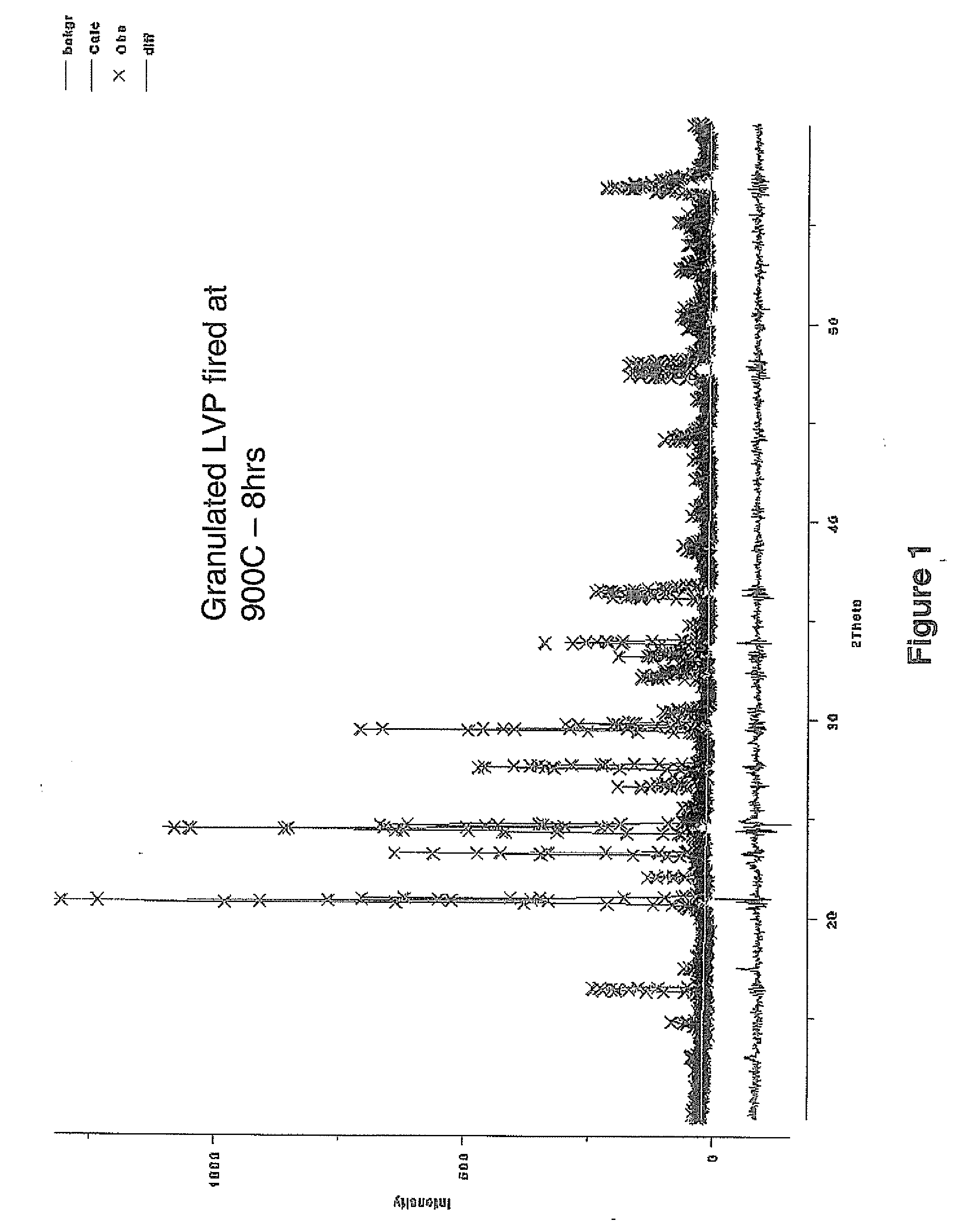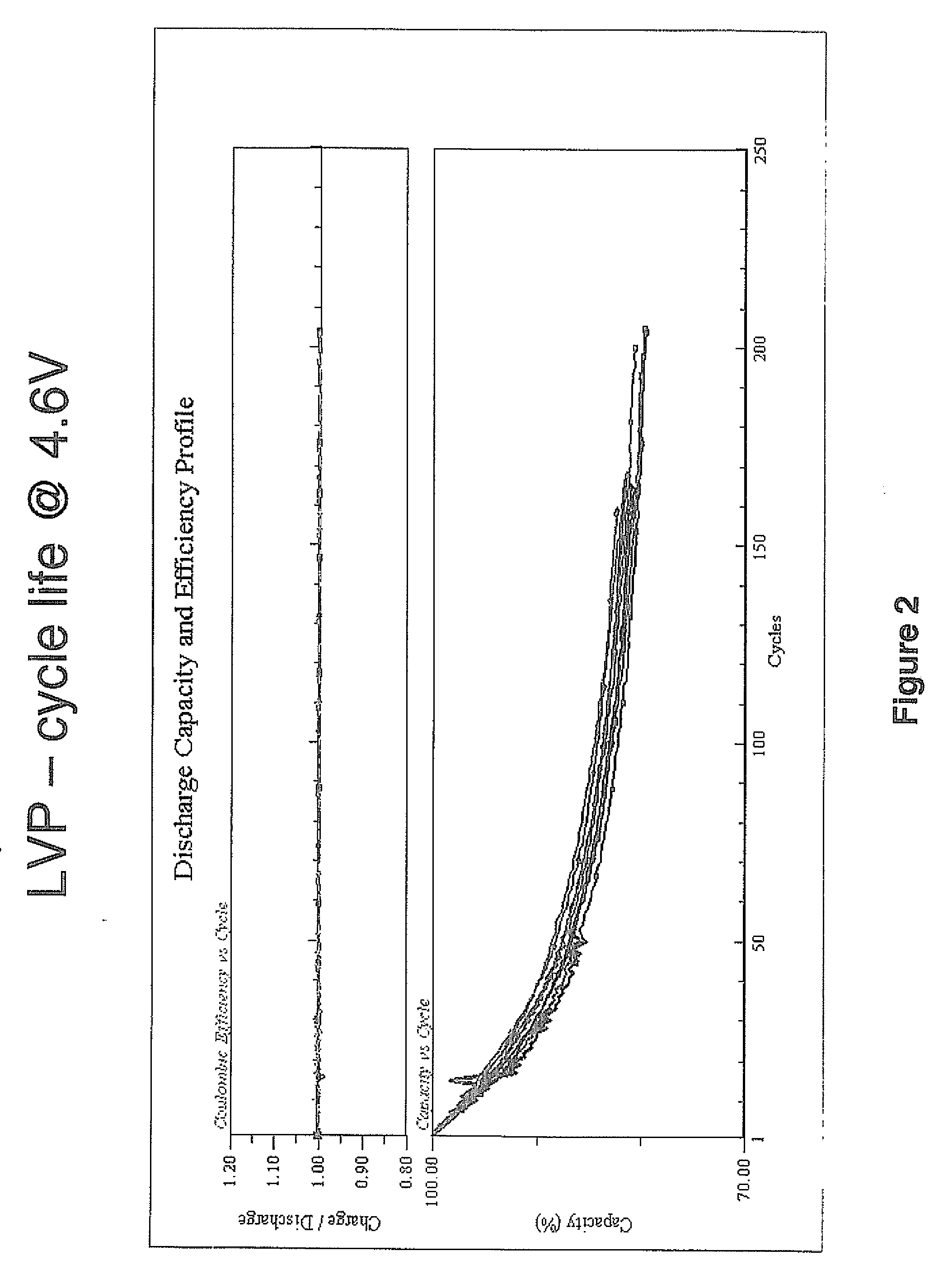Process For Producing Electrode Active Material For Lithium Ion Cell
a lithium ion battery and active material technology, applied in the manufacturing process of electrodes, phosphorus oxyacids, cell components, etc., can solve the problems of lack of one or more of the characteristics of cathode materials known in the art, and inability to meet the requirements of production efficiency and reproducibility, etc. problems, to achieve the effect of efficient and reproducible processes on the manufacturing level
- Summary
- Abstract
- Description
- Claims
- Application Information
AI Technical Summary
Benefits of technology
Problems solved by technology
Method used
Image
Examples
example 1
Preparation of LVP
[0050]Approximately one metric ton of lithium vanadium phosphate was prepared according to the following procedure. Multiple batches of LHP, V2O3 and carbon were mixed in water and spray dried. A single batch consisted of LHP (32.29 kg, Suzhou), was dissolved in deionized water (120 kg). V2O3 (15.44 kg, Stratcor), and Super P (2.269 kg, Timcal), were added to the LHP solution in an Attritor Mixer to form a slurry. The slurry was spray dried (350° C. in / 142° C. out) to form a homogenous precursor composition. The precursor composition was ball-milled for 4 hours to form a milled precursor composition. The resulting milled precursor composition was granulated at 2000 psi roller pressure to form 3 / 16 inch diameter granules. The granulated precursor was then pre-baked in a tray oven at 260° C. for about 4 hours to form a precursor composition with moisture content of less than 1%. The resulting granulated precursor composition with low moisture content was calcined in ...
PUM
| Property | Measurement | Unit |
|---|---|---|
| particle size | aaaaa | aaaaa |
| particle size | aaaaa | aaaaa |
| particle size | aaaaa | aaaaa |
Abstract
Description
Claims
Application Information
 Login to View More
Login to View More - R&D
- Intellectual Property
- Life Sciences
- Materials
- Tech Scout
- Unparalleled Data Quality
- Higher Quality Content
- 60% Fewer Hallucinations
Browse by: Latest US Patents, China's latest patents, Technical Efficacy Thesaurus, Application Domain, Technology Topic, Popular Technical Reports.
© 2025 PatSnap. All rights reserved.Legal|Privacy policy|Modern Slavery Act Transparency Statement|Sitemap|About US| Contact US: help@patsnap.com


